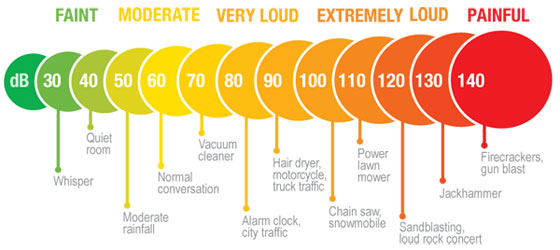Hearing Conservation
Overview
Noise, or unwanted sound, is one of the most pervasive occupational health problems. Sound consists of pressure changes in a medium (usually air), caused by vibration or turbulence. These pressure changes produce waves emanating away from the turbulent or vibrating source. The most common unit for measuring sound pressure levels is the decibel (dB). Exposure to high levels of noise causes hearing loss and may cause other harmful health effects as well. The extent of damage depends primarily on the intensity of the noise and the duration of the exposure. Noise-induced hearing loss can be temporary or permanent. Temporary hearing loss results from short-term exposures to noise, with normal hearing returning after period of rest. Generally, prolonged exposure to high noise levels over a period of time gradually causes permanent damage.

Hearing Conservation Program
Western's policy and federal and state regulations require employers to monitor noise exposure levels in a way that accurately identifies employees exposed to noise at or above 85 decibels (dB) averaged over 8 working hours, or an 8-hour time-weighted average (TWA). Employers must monitor all employees whose noise exposure is equivalent to or greater than a noise exposure received in 8 hours where the noise level is constantly 85 dB. The exposure measurement must include all continuous, intermittent, and impulsive noise within an 80 dB to 130 dB range and must be taken during a typical work situation.
When employees are exposed to noise that equals or is more than the 85 dB average, those employees must be included into WWU's hearing conservation program. Employees in the program will receive:
- Annual training on how to best protect their hearing.
- Annual audiometric testing to identify potential problems with their ability to hear.
- Means to reduce potentially harmful sound levels to levels that are safe.
